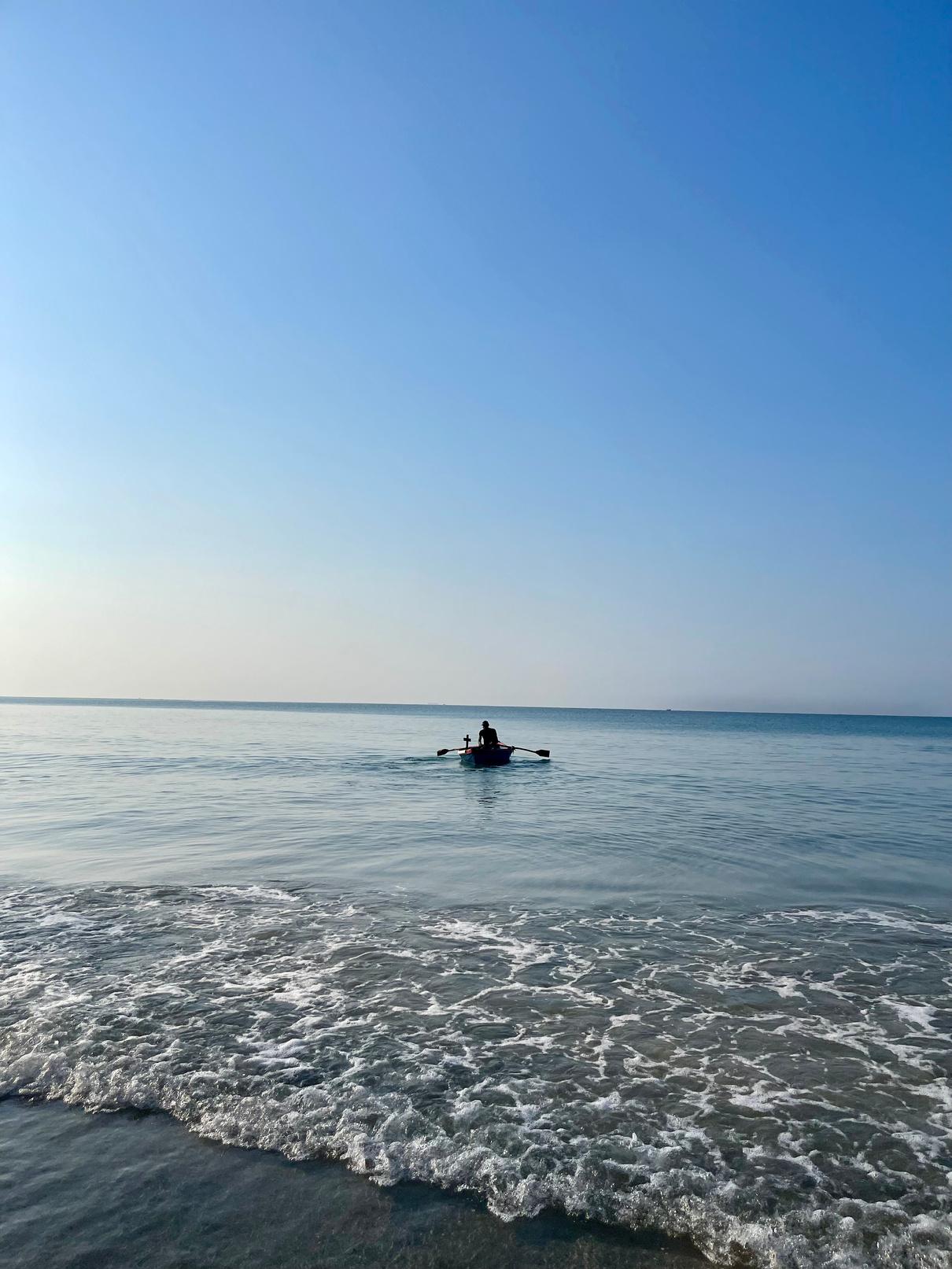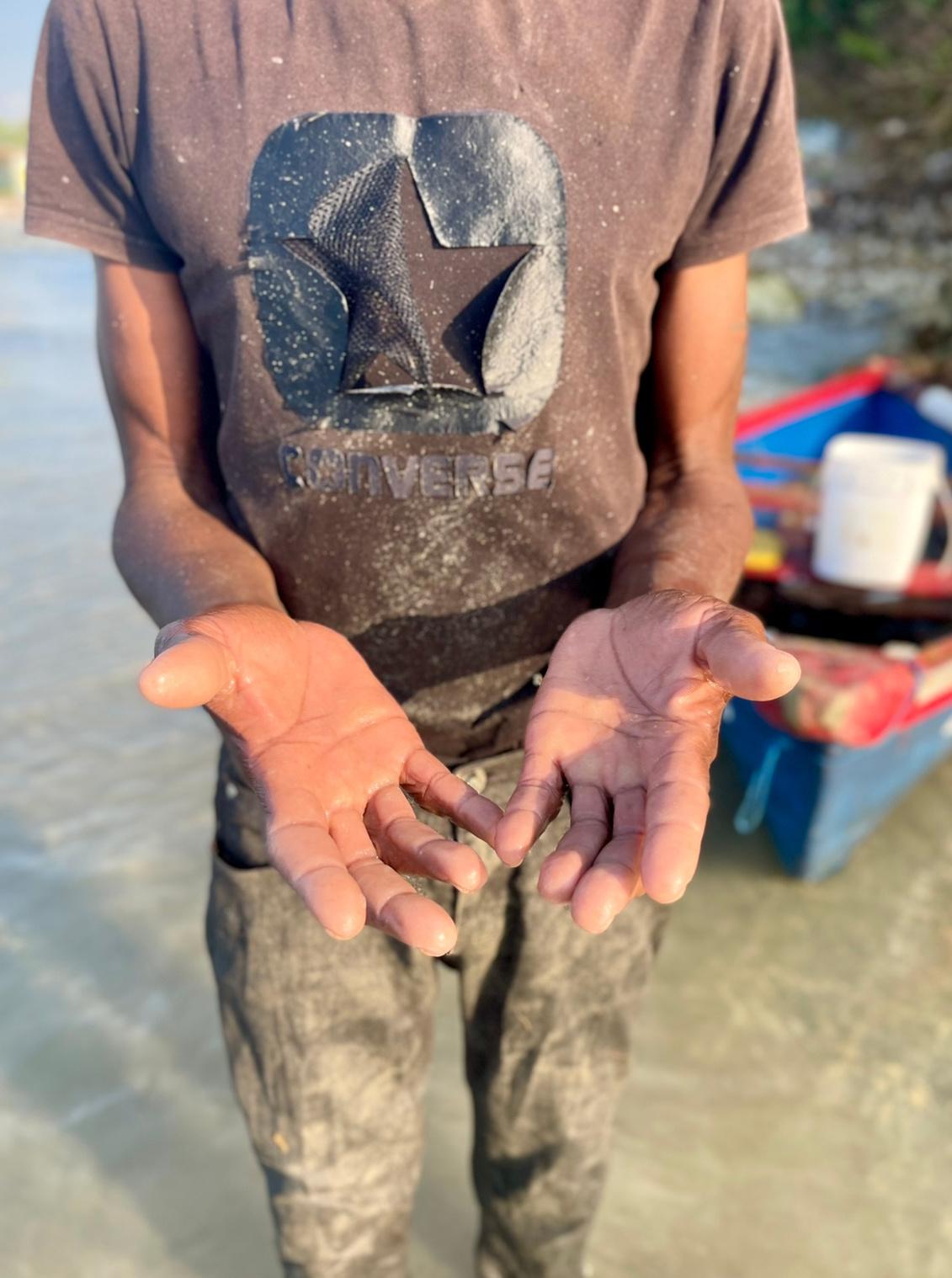

SILENT STRUGGLES
Unveiling the Invisible Workforce

THE INVISIBLE WORKFORCE ?
There is a secret workforce whose struggles are often publicized in the quickly expanding gig economy, where flexibility and self-determination are greatly prized. These individuals work quietly behind the scenes in the gig economy, confronting a range of challenges that sometimes go unnoticed. They are the "invisible workforce" of the gig economy.
In the pre-dawn hours, when the earth is still shrouded in shadows and the seas whisper secrets to the sky, a lone figure walks out into the great expanse of the ocean. Meet Hopeton Smith, a seasoned fisherman whose life is intimately linked into the fabric of the gig economy.
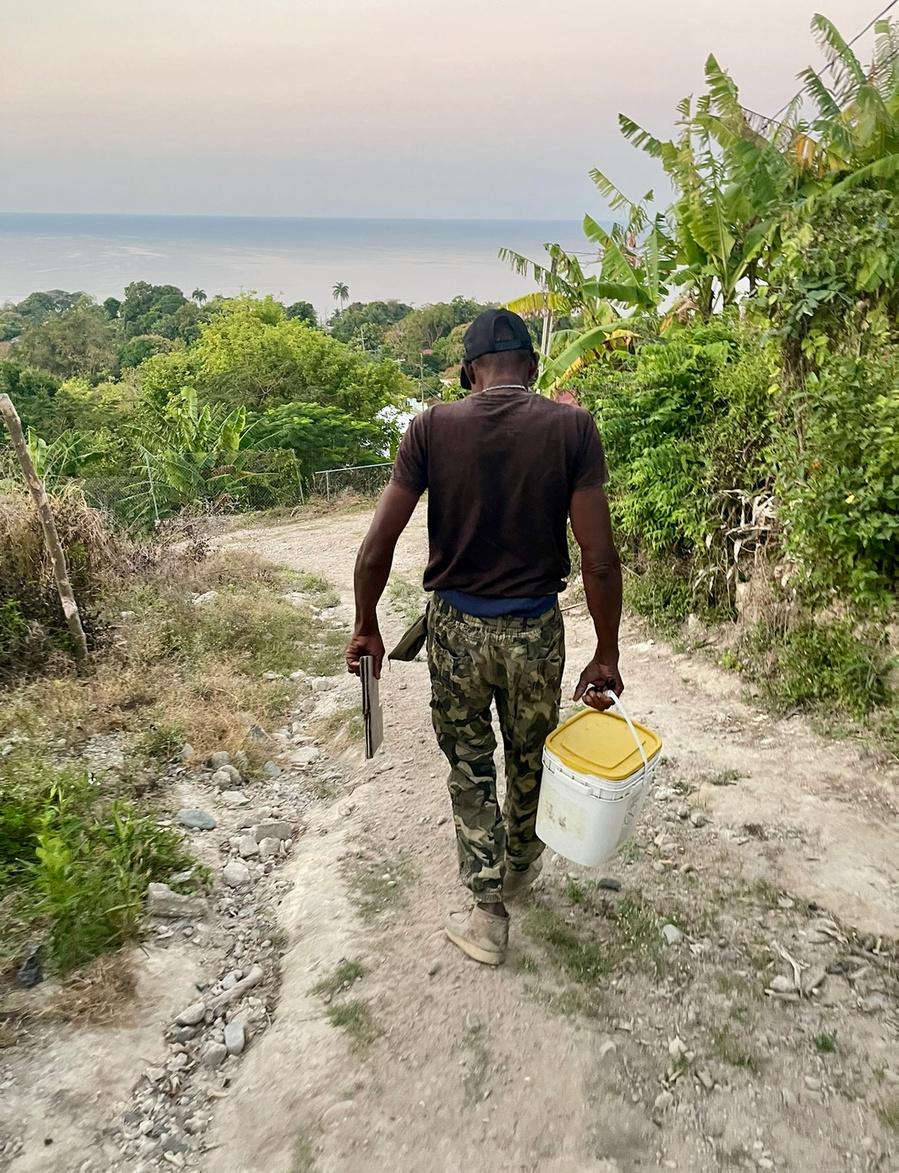 Photograph taken by Janet Mannings on March 8, 2024 of Hopeton Smith leaving his home and heading out at 6:00a.m to go to sea.
Photograph taken by Janet Mannings on March 8, 2024 of Hopeton Smith leaving his home and heading out at 6:00a.m to go to sea.
GIGONOMICS
NATIONAL
Jamaica has a serious problem with underemployment and unemployment. Because there aren't enough jobs in traditional industries, a lot of people are turning to the gig economy to use their abilities and make some money. Although gig work provides a flexible substitute for traditional employment, there are regulatory issues associated with it A large number of gig workers are self-employed and lack access to basic protections and benefits like health insurance and pensions Because of this lack of formalization, workers are more susceptible to exploitation and disparities in the workplace are maintained. Jamaica requires extensive legislative frameworks that protect gig workers' rights and well-being while acknowledging the particular dynamics of this industry in order to address these problems.
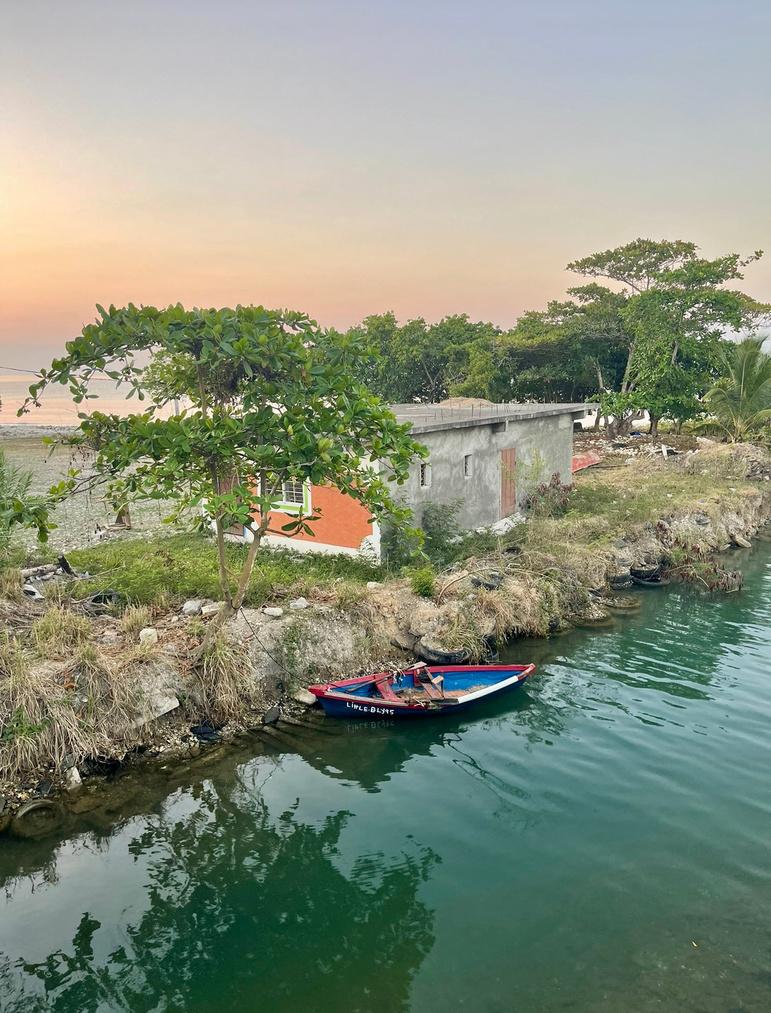
INTERNATIONAL Globalization of markets and the emergence of digital platforms are linked to the expansion of Jamaica's gig economy. With the help of these technological developments, Jamaicans can now work remotely and take on freelance jobs abroad, increasing their earning potential beyond regional limitations. Remittances from Jamaica's diaspora also make a substantial economic contribution, and the gig economy gives foreigners chances to help their relatives back home while also making an income. These remittances support household budgets, reduce poverty, and spur economic expansion, underscoring the gig economy's critical role in promoting diaspora engagement and long-term socioeconomic development in Jamaica.
Photograph taken by Janet Mannings on March 8, 2024 of Hopeton Smith’s boat at Diamond Beach, St Thomas.THE NEWS
“HIDDEN REALITIES”
Recent research indicates that the environment in which this quiet group lives is unstable and uncertain. The gig economy provides a way out of the constraints of normal work, but many individuals find themselves without access to fundamental protections and benefits, caught in a neverending cycle of insecurity.
These people's stories from independent artists managing unpredictable income streams to delivery drivers navigating hazardous road conditions powerfully illustrate tenacity in the face of adversity. They are vital to the gig economy, but their contributions are often overlooked and pushed to the margins of public discourse.
Moreover, the epidemic has intensified the vulnerabilities of this hidden labor. In times of economic downturn and health issues, gig workers are particularly susceptible to the whims of an unstable market as there are no safety nets in place, such as paid time off or healthcare coverage. As the repercussions of an increasingly gigbased economy weigh on society, it is imperative to draw attention to the untold struggles of the labor force. By speaking up and demanding tangible changes, we can move toward a more inclusive future where all workers visible or not are treated with the dignity and support they deserve.
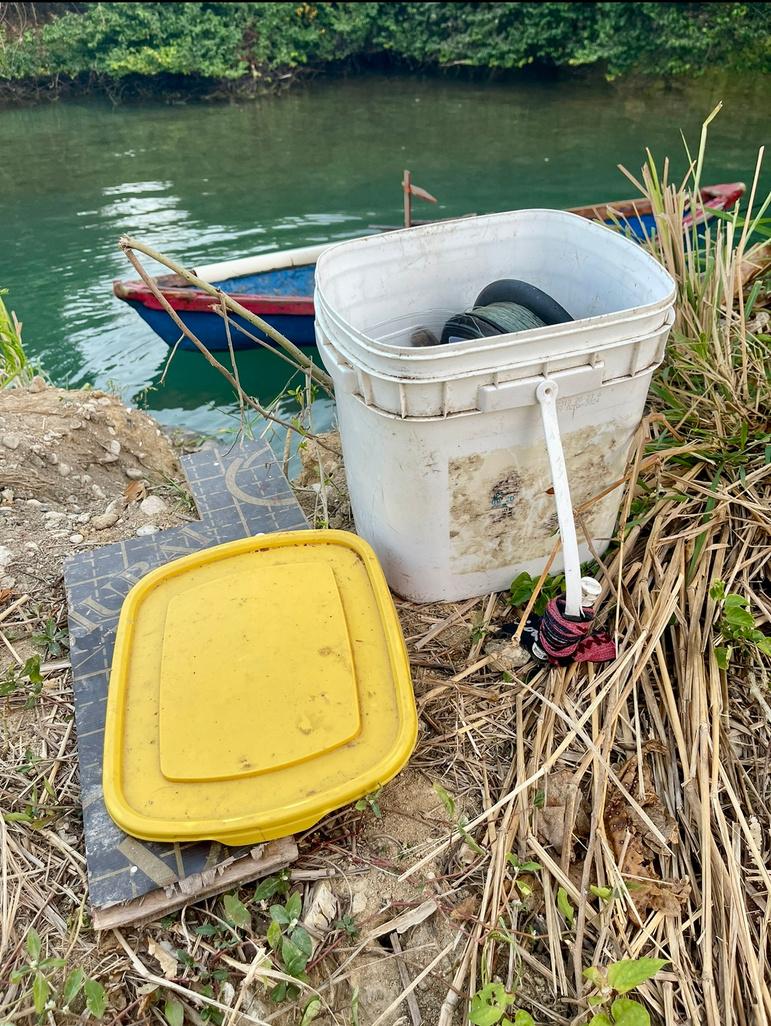
“HIS EQUIPMENT”
Photograph taken by Janet Mannings on March 8, 2024 of Hopeton Smith’s fish bucket with his fishing line and hooks.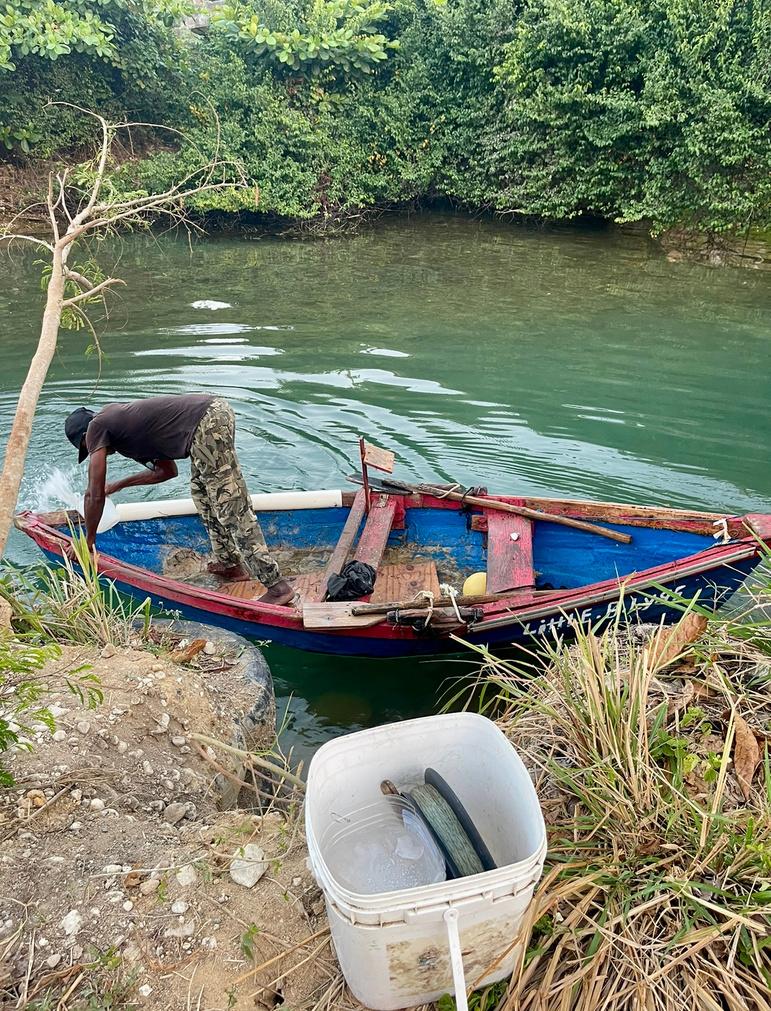
“FLOOD OUT”
Photograph taken by Janet Mannings on March 8, 2024 of Hopeton Smith bailing out water from his boat.HOPETON MANNINGS
For years, Hopeton has cast his nets into the depths, relying on the unpredictability of the sea to provide for his family. But behind the picturesque facade lies a silent struggle, one that epitomizes the challenges faced by the invisible workforce.
Hopeton plays the roles of both master and servant in the gig economy. Although he controls his own schedule and destiny, he is subject to the whims of the market and shifting prices.
Technology's continuous ascent has presented both benefits and challenges; although platforms promise connectivity, they frequently cast people like Hopeton adrift in an uncharted area. He lives in an unstable world of constant labor. Every capture is a risk, every payout an effort to balance the risks of extinction and survival. The boundaries between work and play have become increasingly hazy in the gig economy, making it difficult to find stability or a break.
But resilience exists in the middle of the quiet challenges. Hopeton's hands, worn from time and use, speak of a life molded by the tides, of resiliency and endurance. He is a living example of the human element's unwavering spirit, traversing choppy waters with calm persistence. His narrative serves as a poignant reminder of the humanity underlying the gig economy as we reveal the existence of the unseen labor. Every transaction has a life, a backstory, and a silent battle that needs to be heard behind it. We intend to lobby for laws that protect the rights and well-being of gig workers and to start a meaningful conversation by bringing these oftenignored struggles to light.

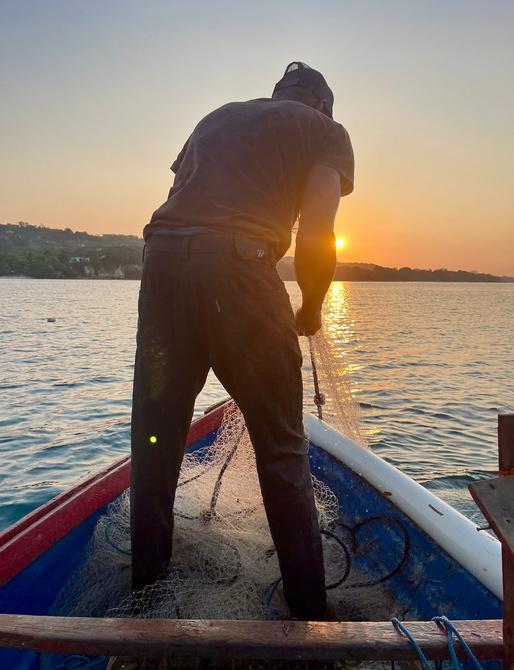
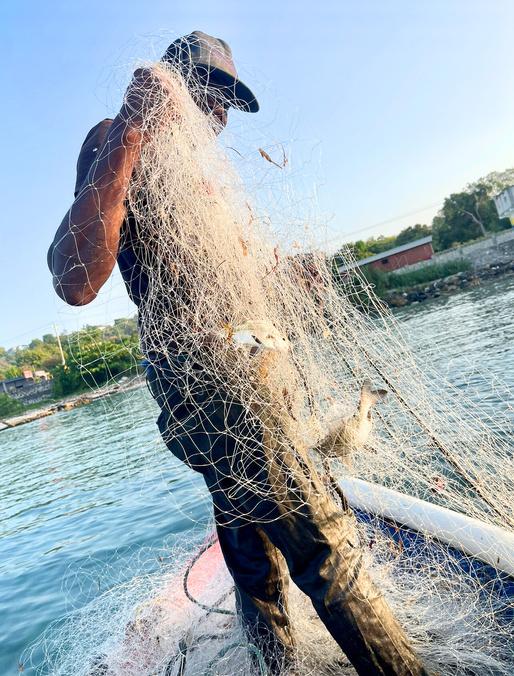
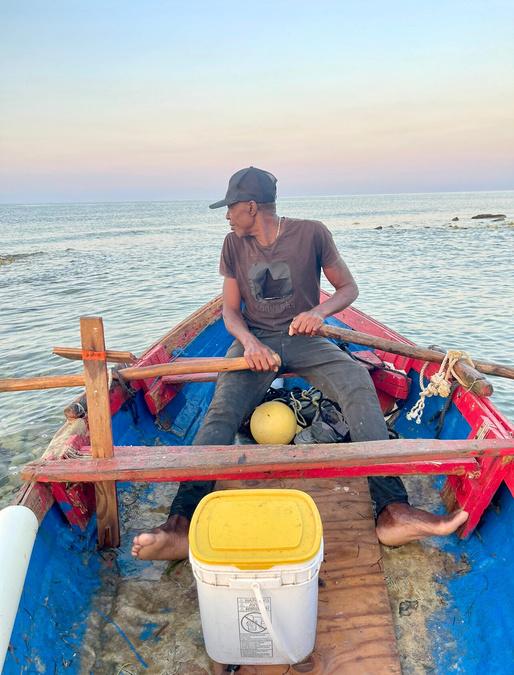
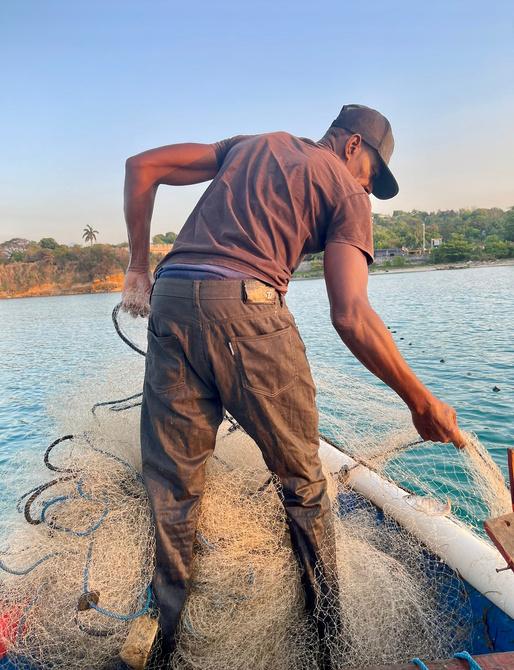
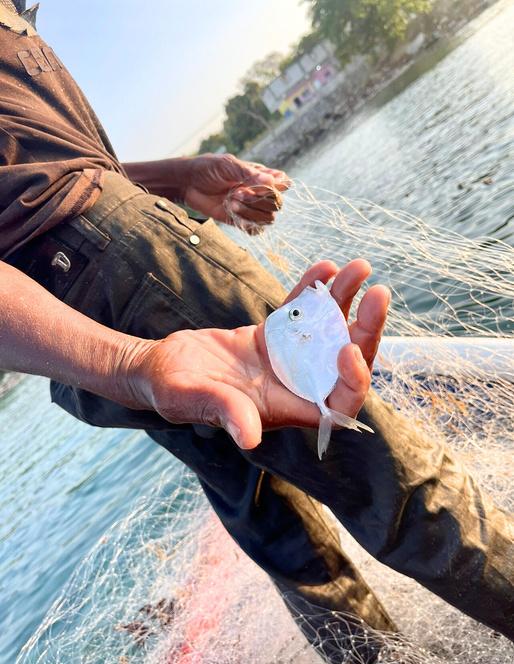 Photographs taken by Janet Mannings on March 8, 2024 of Hopeton Smith rowing his boat out to sea.
Photographs taken by Janet Mannings on March 8, 2024 of Hopeton Smith drawing one of his nets that he set the night before.
Photographs taken by Janet Mannings on March 8, 2024 of Hopeton Smith showing off soem fishes he caugh on his net.
Photographs taken by Janet Mannings on March 8, 2024 of Hopeton Smith rowing his boat out to sea.
Photographs taken by Janet Mannings on March 8, 2024 of Hopeton Smith drawing one of his nets that he set the night before.
Photographs taken by Janet Mannings on March 8, 2024 of Hopeton Smith showing off soem fishes he caugh on his net.
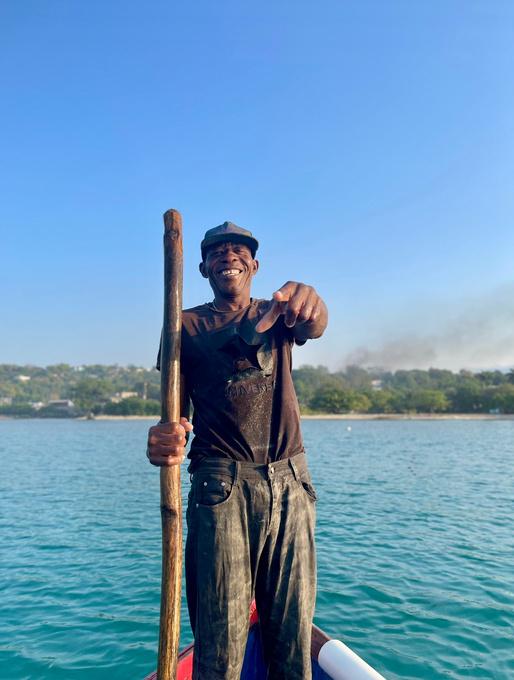
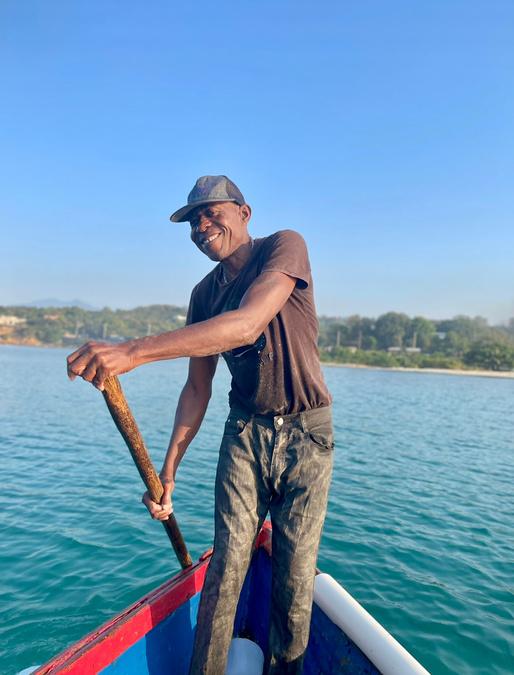
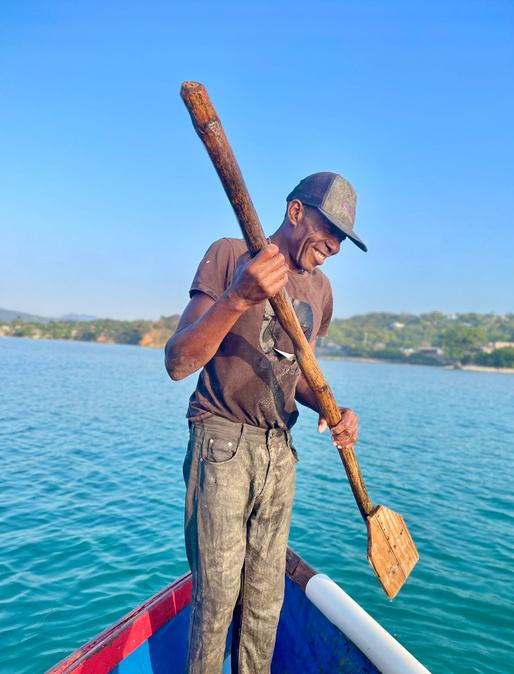
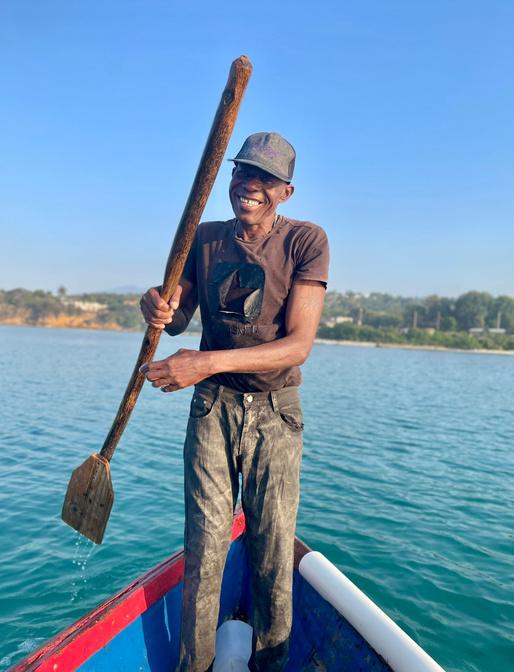
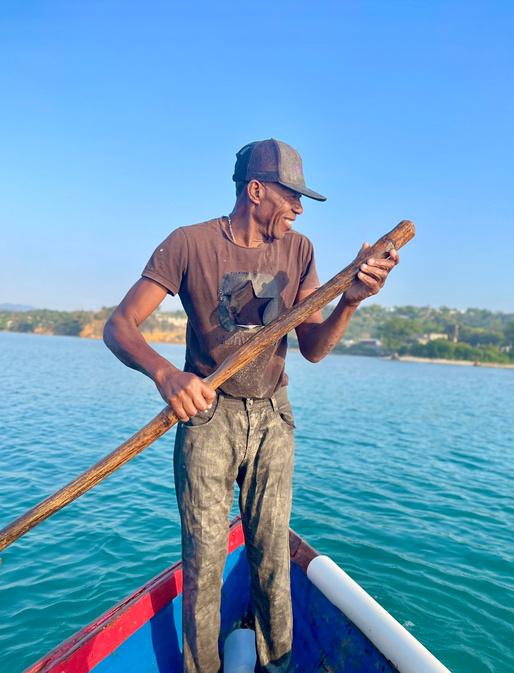 Photographs taken by Janet Mannings on March 8, 2024 of Hopeton Smith posing for the camera.
Photographs taken by Janet Mannings on March 8, 2024 of Hopeton Smith posing for the camera.
THE CHANGE

Recognition of Invisible Workers: My project will raise awareness of those who frequently labor in the gig economy without being acknowledged or given enough credit by focusing on exposing the invisible workforce. Greater appreciation for their accomplishments and an understanding of their significance in society may result from this recognition.
Economic Equality and Fairness: In comparison to regular employment, many gig workers experience unstable working conditions, low pay, and a lack of benefits. By bringing attention to these problems and promoting equitable pay, improved working conditions, and access to benefits like healthcare and retirement savings, my proposal could promote greater economic equality.
Policy Reform and Regulation: My project's findings may help legislators understand the difficulties gig workers have, which could result in the creation of rules and laws that defend their rights and enhance their working conditions. This could involve actions about labor legislation, social safety net access, and minimum wage rules.
Social Awareness and Empathy: By telling stories and bringing attention to the difficulties faced by gig workers, my effort may help the general public develop empathy and understanding. A larger level of support for programs targeted at enhancing the lives of gig workers and resolving the structural problems they encounter may result from this raised social consciousness.
Effect on Future of Employment Debates: One significant feature of the changing nature of employment is the gig economy. The insights my project provides into the lives of gig workers may be useful in more general conversations about the nature of work in the future, including how technology will play a role, how the gig economy will affect traditional employment, and how important social protections will be in an evolving labor market.
THE FISHING PROCESS
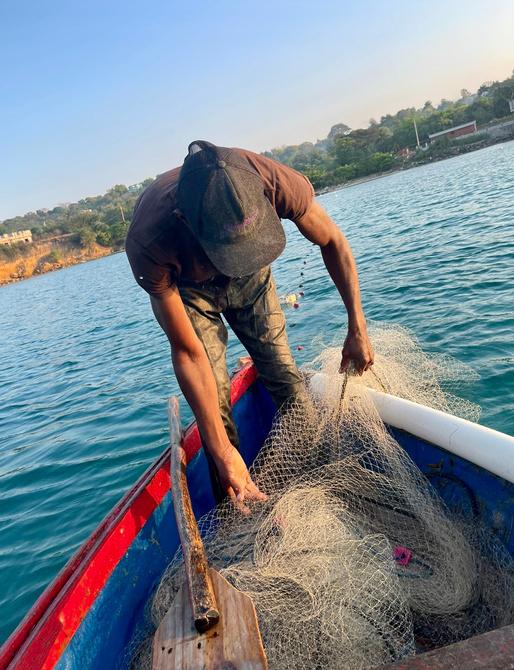
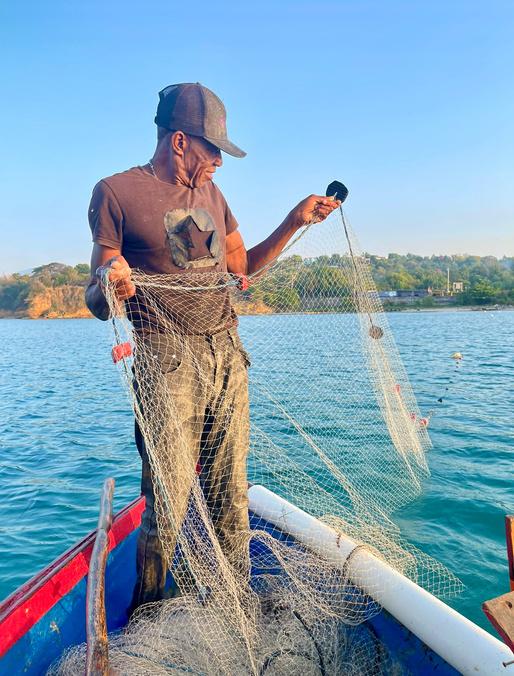

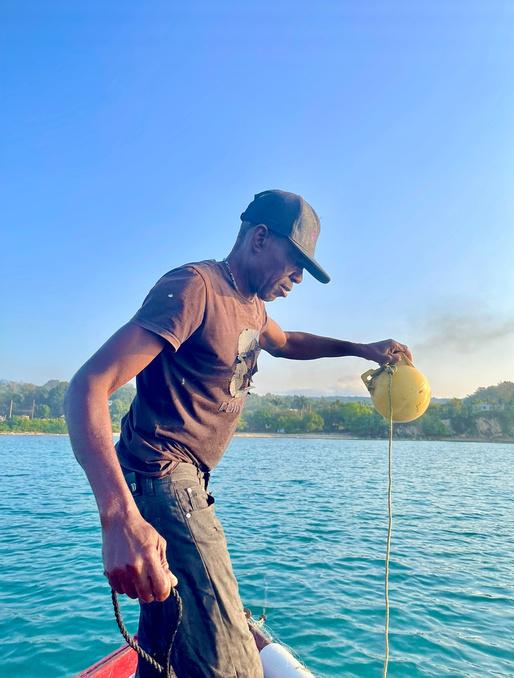 Photographs taken by Janet Mannings on March 8, 2024 of Hopeton Smith demonstrating how to set a net.
Photographs taken by Janet Mannings on March 8, 2024 of Hopeton Smith demonstrating how to set a net.

LESSONS LEARNT
Preparation is Key: Before heading out to cover a news event, research the background and context of the issue. Understanding the story behind the images you're capturing will help you anticipate key moments and angles to focus on.
Be Ready to Adapt: News situations can evolve rapidly, so be prepared to adapt your approach on the fly. Stay flexible with your shooting plan and be ready to pivot to capture unexpected developments or angles that arise.
Capture the Emotion: Emotions often drive news stories, so look for opportunities to capture the emotional impact of the event. Whether it's joy, sorrow, anger, or resilience, emotion can add depth and resonance to your images.
Find Unique Perspectives: Avoid shooting the same images as everyone else by seeking out unique perspectives and angles. Experiment with different vantage points, compositions, and lenses to tell the story in a visually compelling way.
Focus on Details: While wide shots are important for context, don't forget to capture close-up details that can provide additional insight into the story. Details like facial expressions, gestures, and objects can convey powerful narratives within the larger context of the event
Be Respectful: Treat the subjects of your photographs with respect and empathy. Seek consent when appropriate, especially in sensitive or intimate situations. Avoid exploiting people's pain or suffering for sensationalistic purposes.
Stay Safe: Safety should always be a priority when covering news events. Be aware of your surroundings, follow any safety guidelines or instructions from authorities, and trust your instincts if a situation feels unsafe.
Keep Equipment Simple: In fast-paced news situations, simplicity is key. Stick to essential equipment and avoid getting bogged down with unnecessary gear. A lightweight setup that allows you to move quickly and discreetly will serve you well.
Maintain Objectivity: Avoid injecting your personal opinions or interpretations into your images, and strive to maintain objectivity in your storytelling.
Review and Reflect: After covering a news event, take time to review your images and reflect on what worked well and what could be improved. Learning from each experience will help you grow as a photographer and better serve your audience.
CATCH OF THE DAY
 Photograph taken by Janet Mannings on March 8, 2024 of Hopeton Smith’s catch from his net. These include: Drummer, Grunt, Snook, Herring Sprat.
Photograph taken by Janet Mannings on March 8, 2024 of Hopeton Smith’s catch from his net. These include: Drummer, Grunt, Snook, Herring Sprat.

APPROACH
Establishing Trust: Building a rapport with Hopeton was very essential. I took the time to listen to his stories, understand his experiences, and gain his trust before picking up the camera. Respect for privacy and dignity is paramount.
Capturing Authenticity: I strived to capture the authenticity of Hopeton's experiences through both words and images. This meant immersing myself in his world, observing his routines, and capturing candid moments that revealed the nuances of his life in the gig economy.
Visual Storytelling: Using a combination of photography and written narrative, I aim to tell Hopeton's story in a visually compelling and emotionally resonant way. This involved capturing atmospheric shots of him at work, intimate portraits that convey his personality, and images that highlight the challenges he faces.
Highlighting Resilience: While acknowledging the struggles faced by gig workers like Hopeton, I also want to emphasize their resilience and determination. Through images and words, I seek to showcase the strength and resilience of individuals who navigate the uncertainties of the gig economy with courage and fortitude.
Advocacy and Empathy: Ultimately, the goal of documenting Hopeton's story was to spark empathy, inspire dialogue, and advocate for policies that support the well-being and rights of gig workers. I want to use the project as a platform to raise awareness about the human impact of the gig economy and encourage viewers to consider the broader social and economic implications.
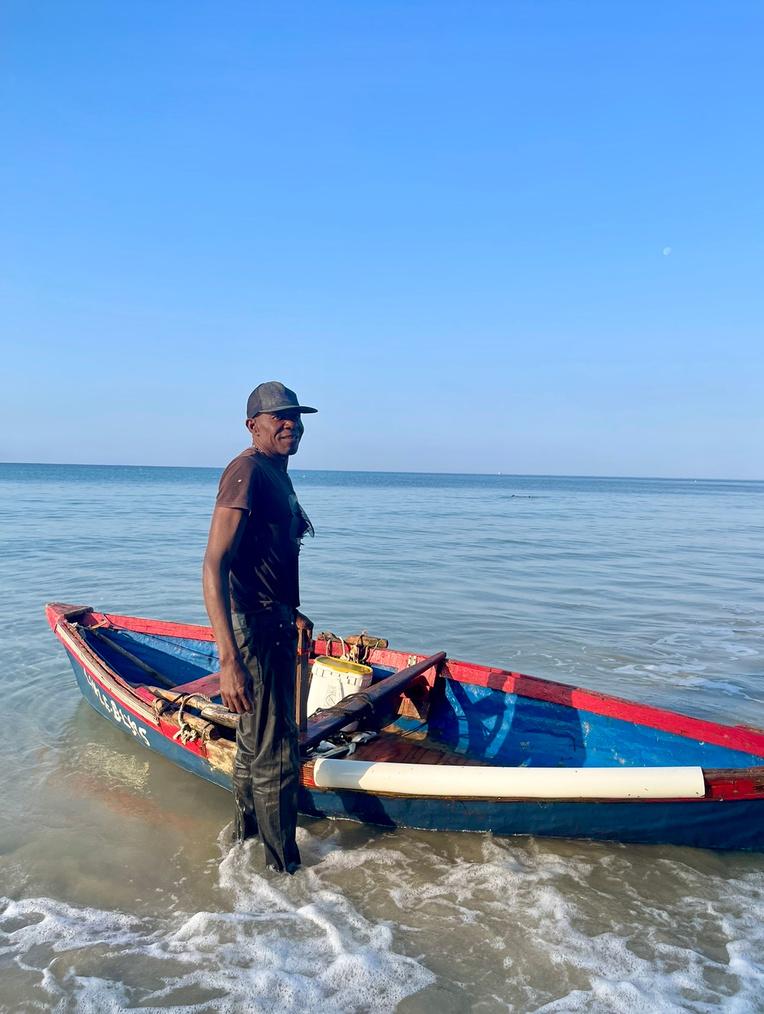
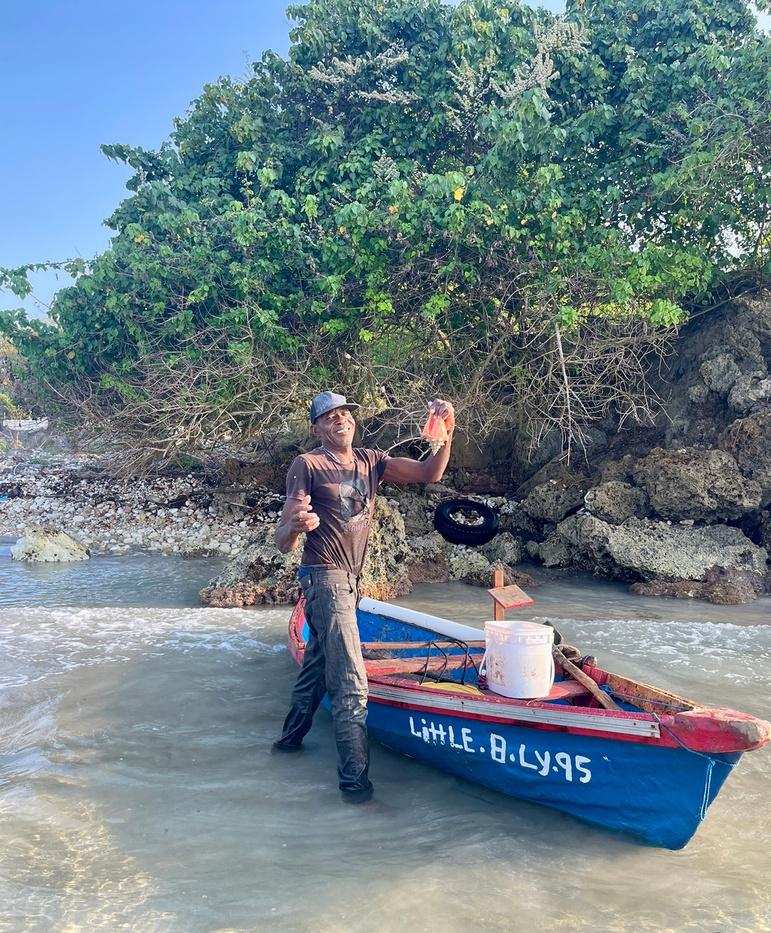 Photographs taken by Janet Mannings on March 8, 2024 of Hopeton Smith’s standing beside his boat.
Photographs taken by Janet Mannings on March 8, 2024 of Hopeton Smith’s standing beside his boat.
HIS PRIZE POSSESSION
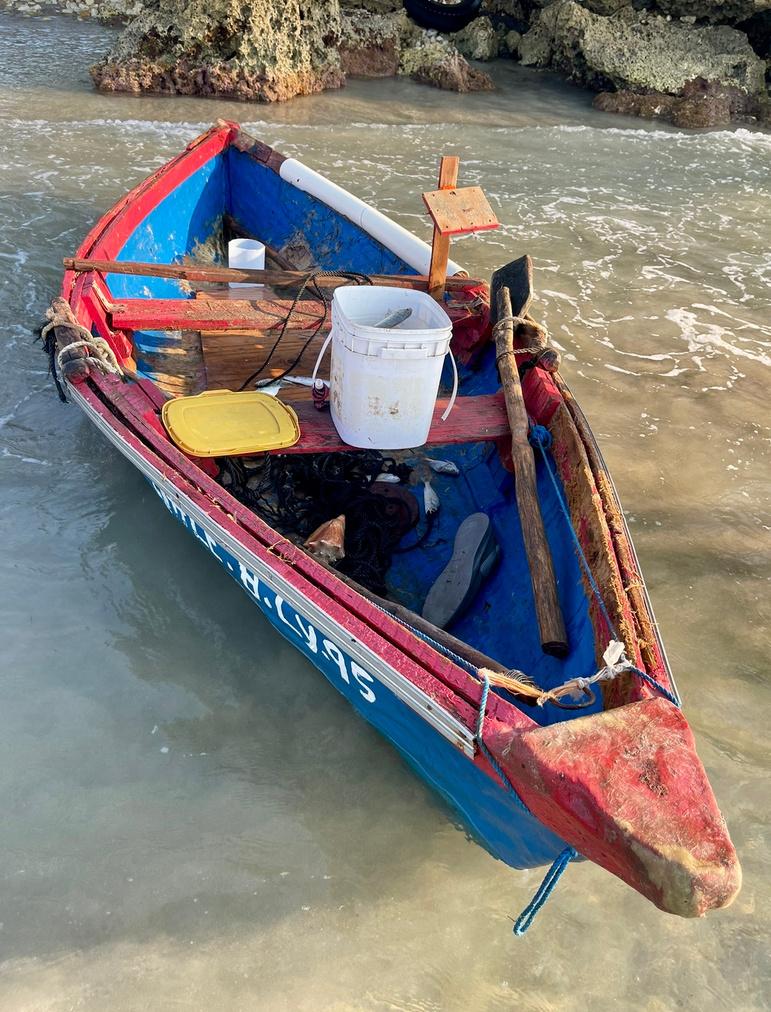 Photograph taken by Janet Mannings on March 8, 2024 of Hopeton Smith’s Boat, ‘LittLE. B.L.Y.9.5”
Photograph taken by Janet Mannings on March 8, 2024 of Hopeton Smith’s Boat, ‘LittLE. B.L.Y.9.5”
